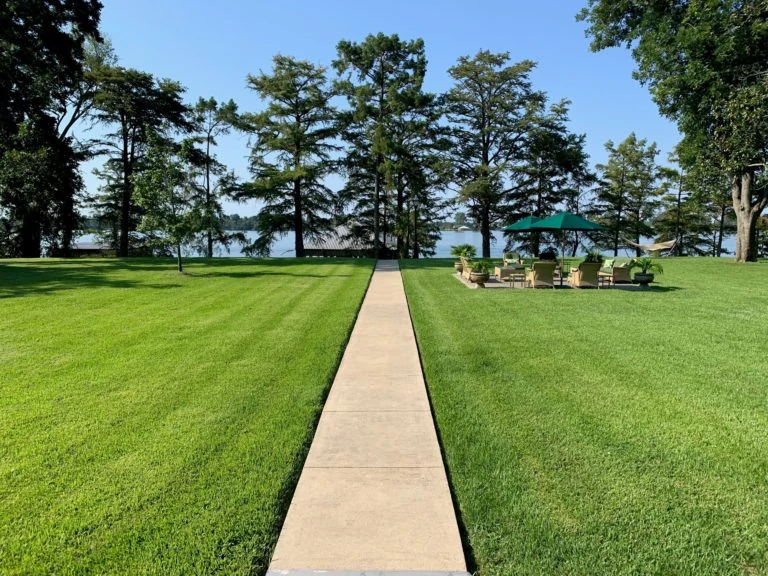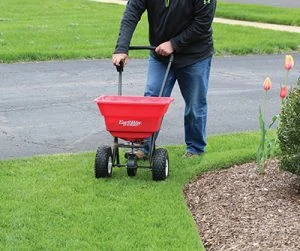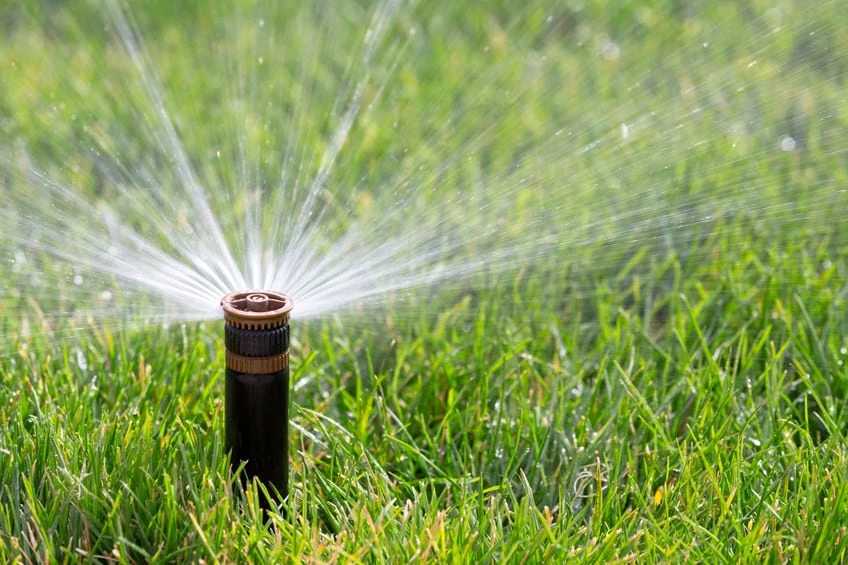At some point during every homeowner’s life they will be guilty of one of the original sins: coveting thy neighbor. It seems every neighborhood in America has at least one perfect lawn the flawless, almost surreal, green carpet of grass that makes the other neighbors green with envy. Many people assume that owning such a lawn would be nice, but ultimately require too much work to make it worthwhile. To dispel this rumor and prove that with a few simple steps anyone can have the perfect lawn, consider the following tips to help you become the object of your neighbor’s envy.
Green Light to Get Started
Preparing for the perfect yard seems less arduous when you realize the process can be broken down into three simple steps:
1. Choosing your seed
2. Fertilization and site preparation
3. Maintenance
Most varieties of grass seed need to be planted either in the fall or spring, depending upon whether it is considered a warm- or cool-season grass. Typically, grasses planted during the fall should be planted between August and November, depending on your area of the country. The further north you live, the earlier during that time period you will need to plant your seed, because the seed needs time to sprout and begin growing before the onset of winter’s freezing temperatures. Conversely, in the spring grass seed should be planted between the months of February and May again depending on your part of the country. Make sure to start your springtime planting after you’re free from the threat of freezing temperatures.
Seed Choice
Certain factors need to be considered when choosing a grass seed for your lawn. Obviously, aesthetics will be at the top of any list. How will the grass look? A well-manicured, attractive lawn is the ultimate goal and it can also increase the value of your home. Fescue, Bermuda and St. Augustine are three of the most highly requested grass varieties. Zoysia bluegrass and ryegrass are also popular choices. Aside from aesthetics two very important factors must also be considered:
1. Again, what is the climate of your planting area?
2. How much shade will the lawn area have?
Many seed distributors, such as The Pennington Seed Company, have extremely useful websites that can help determine what types of seed grow well in you area as well as how much shade they will tolerate. This information and much more can be found at www.Penningtonseed.com.
Site Prep
Once you have determined the type of seed to plant, you must decide how to prepare the site for planting. For the purposes of this discussion we will assume you find yourself with one of the following scenarios:
1. New lawn seeding
2. Reseeding
3. Undesirable weeds or grass
4. Improving bare spots
Each scenario will require a few different steps, but in each situation it is imperative to have the site properly fertilized. There is no substitute for a soil test. A soil test can be acquired at your local agricultural extension office for little or no cost.
In lieu of a soil test apply both lime and a complete lawn fertilizer such as 19-19-19. Lime neutralizes a soil’s pH level. Most grasses need a neutral soil pH in order to thrive. Apply lime liberally at roughly the rate of two tons per acre. But don’t pass out know that lime is dirt cheap and can be acquired by the truckload at your local farmers’ co-op.
Apply the lime and fertilizer at the recommended rates and according to directions. Work the lime and fertilizer evenly into the earth and then level the soil.
When seeding a new lawn, begin by pulverizing soil completely by spading or disking. Sow the seed into the cultivated area. The amount of seed required will depend upon the variety, and recommended planting-rate information can usually be found on the bag of seed itself or on the seed company’s website. After sowing the seed, rake or lightly harrow the seed into the soil, covering it by no more than 1/4 to 1/2 inch. Keep the area well watered until the seed germinates and the seedlings have grown sufficient to establish a lawn.
When reseeding, preparation will be a little different. Begin by mowing or otherwise clipping the existing grass down as closely as possible. Next, aerate the entire area with a lawn aerator. This will loosen the soil, providing both necessary oxygen to the roots and room for the roots to grow. A lawn aerator can be rented easily and cheaply from your local rental service. You will probably only need it for a half-day, unless you plan on using it to aerate multiple or extremely large lawns.
Next, rake or harrow where existing grass is growing to allow the new seed to make contact with the soil. Keep the area well watered until the seed germinates as in the first scenario.
Often lawns succumb to undesirable weeds or grasses, in which case you’ll need to eradicate the problem areas. During any growing season spray the area of undesirable weeds and grasses with a nonselective herbicide labeled for lawn use following the instructions on the label. After the lawn turns brown, follow the instructions in the first scenario.
If you simply want to improve a bare spot on your lawn, begin by mowing the spot or spots closely then removing leaves, dead grass and any other debris from the area. Rake the bare spots to prepare the seed bed and then follow planting instructions as outlined above.
Keep it Green
Once you have your lawn established, it can easily be maintained by following a few simple steps. First, maintain a consistent watering schedule, depending on the soil conditions, because overwatering to the point that the water does not have time to soak into the soil can create a constant puddling, resulting in disease problems. Aerate the lawn once each year before or during the growing season for your area. Fertilize your lawn annually (a good idea is to do this when aerating the lawn). Use a pelletized lawn-safe weed killer to keep out undesirable grasses and weeds. And finally, use a lawn winterizer, which prepares your lawn to survive harsh winter conditions and loads it with Potassium for the onset of the following growing season.
By following these simple guidelines, anyone can have an emerald-green carpet of a lawn. All it takes is a few simple steps and a little extra time and work. And when executed correctly, a beautiful lawn can pay big dividends all year long.
FAQ’s
How long does it take for seed to germinate? Most grass seed will germinate within 14 days of planting if given the right conditions. However, if conditions are unfavorable, such as little or no moisture or extreme temperatures, seed may not germinate at all until conditions change.
How soon after I apply herbicide can I successfully plant new grass seed? Typically, seed can be planted about five to six weeks after application. Never plant immediately after application. The chemicals will stay resident in the soil for this five- to six-week period and will be too strong for new seedlings to survive.





